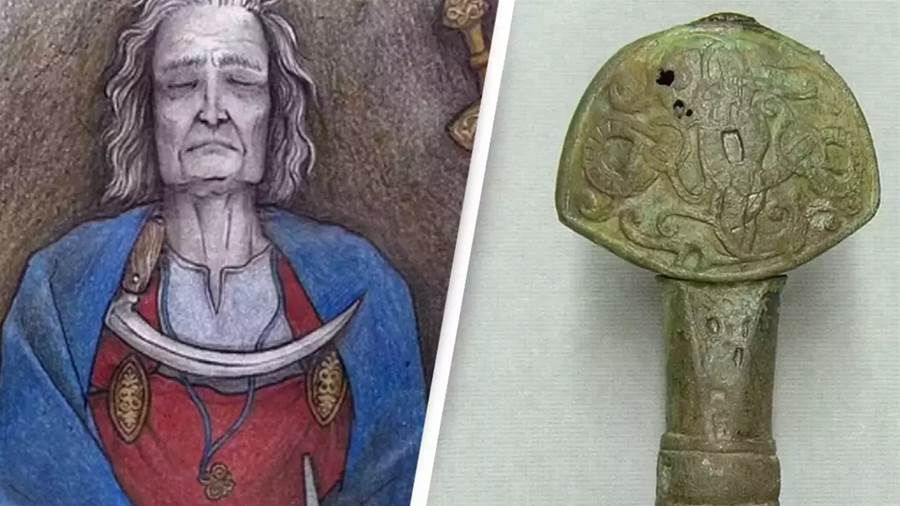

New Study Suggests Warrior Buried 1,000 Years Ago May Have Been Non-Binary: A Window into Ancient Gender Identities
A Discovery from the 1960s Holds New Secrets in Modern Times
In the quiet countryside of Finland, a mysterious grave was uncovered back in the 1960s, bearing relics and a lone sword that hinted at the life of a warrior from a bygone era. Now, decades later, new research challenges assumptions about the identity and social role of the individual buried within. As scientists take a fresh look at this Iron Age grave, they find themselves grappling with questions that could rewrite our understanding of gender in ancient societies.
What started as a routine archaeological study has evolved into a thought-provoking revelation about social identities over a thousand years ago. The grave, discovered in Suontaka Vesitorninmäki, Hattula, has raised questions that go beyond the usual narratives of warriors and leaders from Finland’s Iron Age. Could this warrior have been someone whose gender defied traditional norms?

The Grave of a Warrior Who Defied Gender Expectations
Initially, the grave seemed to belong to a powerful figure: buried with a bronze-handled sword, this individual appeared to embody the archetype of a warrior.
However, alongside this symbol of strength were delicate pieces of jewelry and clothing typically associated with femininity during the era. This blend of masculine and feminine items puzzled historians, leading some to speculate that the grave might have housed both a man and a woman.
Yet, as confirmed by modern DNA analysis, the grave held only one individual. The juxtaposition of a warrior’s sword and traditionally feminine adornments hints at a complex identity—one that might challenge binary views of gender in ancient times. This intriguing discovery invites us to question whether societies of the past might have recognized and accepted identities that do not fit neatly into “male” or “female” categories.

Ancient DNA Analysis Sheds Light on a Unique Genetic Profile
Adding another layer of complexity to the story, researchers analyzed the individual’s ancient DNA and discovered signs of a condition known as Klinefelter syndrome. This condition, characterized by an extra X chromosome (XXY), often results in a blend of physical traits typically associated with both male and female genders. While we can only speculate how visible these traits might have been to the ancient community, the condition could explain why this person’s burial reflects both masculine and feminine elements.
According to Ulla Moilanen, a doctoral candidate in archaeology, this individual “may be an example of someone whose social identity fell outside the traditional binary divisions of gender.” The presence of Klinefelter syndrome hints at a person who might not have fit the strict gender roles of the time. Instead, they could have occupied a unique position within their society—one that embraced both strength and beauty.
A New Look at Social Acceptance in Early Medieval Finland
The revelation doesn’t end with the discovery of the warrior’s unique genetic profile. The grave, adorned with valuable artifacts, suggests that the individual was respected and honored within their community.
This challenges stereotypes about rigid gender roles in ancient times, as it implies that the society valued and accepted this person despite—or perhaps because of—their distinctive identity.
“If the characteristics of Klinefelter syndrome were visible, it’s possible that the person was not strictly viewed as male or female,” the University of Turku’s press release explains. The abundant grave offerings reflect a community that celebrated the individual for who they were, providing a rare glimpse into an ancient society that may have shown a nuanced understanding of gender.

Modern Perspectives on an Ancient Legacy of Gender Identity
For researchers, this finding offers more than just an addition to the historical record; it’s a powerful reminder that concepts of gender have always been complex. As modern society continues to explore and redefine ideas of identity, this 1,000-year-old grave illustrates that questions of gender and social acceptance are far from new.
Historians and archaeologists are now pondering what this discovery says about social roles in ancient Finland. Did Iron Age communities hold a broader understanding of gender than previously thought? And if so, could other archaeological finds hold similar secrets waiting to be uncovered?
Public Reactions Spark Debate on Social Media
News of the study has sparked conversations online, with many commenters expressing surprise at the depth of insight gained from a grave so ancient. “It’s amazing to think that even in those times, people could have identities beyond strict male and female roles,” one user remarked. Others, however, remain skeptical, questioning how much we can truly know about ancient beliefs from artifacts alone.
“This finding really turns assumptions on their head,” noted another user. “Who knew that people from 1,000 years ago might have had a more open view of gender than we realize?”
Looking Back and Moving Forward: How We Define Identity
As research on this unique burial continues, it raises an enduring question: How can we, today, truly understand and honor the identities of people from the past? Let us know your thoughts below—do you think ancient societies might have embraced non-binary identities? What do discoveries like this mean for how we view history? Share your opinions and join the conversation!
